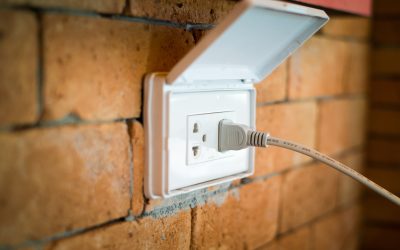A hydrophone is a microphone designed to be used underwater for recording or listening to underwater sound. Most hydrophones are based on a piezoelectric transducer that generates electricity when subjected to a pressure change. Such piezoelectric materials, or transducers, can convert a sound signal into an electrical signal since sound is a pressure wave.
Hydrophones are capacitive since they are made of piezoelectric materials. They can be modeled as a capacitor in the testing circuit. Therefore, the impedance of a hydrophone can be given by the following equation:
The equation above shows that the hydrophone’s impedance becomes lower as the frequency of the electrical signal goes higher. For example, the following diagrams demonstrate the electrical characters of a Teledyne-Reson model TC4034 spherical hydrophone. It has a capacitance of 3 nF and the frequency range is between 5 kHz and 500 kHz.
Figure 1: Transmitting Sensitivity vs. Frequency and Impedance vs. Frequency
According to The Ohm’s Law, the current goes through the hydrophone can be calculated with the following equation.
Thus, in order to drive these hydrophones, you need a wide band AC power amplifier with frequency response starting from the mid-audio frequency range to a few hundred kilo-Hertz (ultrasonic frequency). Depending on the impedance of the hydrophones, you may typically need a few hundred watts of power to drive them. Amp-Line Corp.’s “HF-A” series of power amplifiers are the suitable choices for this application. The frequency response of these power amplifiers covers the whole audio frequency range and goes into ultrasonic frequencies, which is also part of the radio frequency spectrum.
The following block diagrams show you how to drive a hydrophone straight or with step-up (or step-down output transformers). Step-up output transformers is for gaining higher output voltage into the hydrophone. That is usually used when driving it at the lower frequencies. Step-down output transformers is for gaining higher output current capability. That is usually used when driving it at the higher frequencies.
Figure 2: Driving hydrophones directly with a wideband AC power amplifier
Figure 3: Driving hydrophones with a power amplifier through output transformer
We hereby present the model AL-300-HF-A wideband AC power amplifier manufactured by Amp-Line Corp. (located in New York, USA) as an example in this application. The following is the key specifications of this model. As you can see, the frequency response of this model covers all the frequency requirement of different types of hydrophones. The “0-28 V rms.” can power up a lot of hydrophones straightly in certain frequency ranges. In addition, it has the ability to cope with a wide range of dynamic loads through one or more standard or custom made high frequency output transformers.
|
Model |
Output Power |
Frequency Response |
Input |
Output |
Dimensions |
Weight |
Data Sheets |
|
AL-300-HF-A |
300 W |
5 Hz to 800K Hz |
0 – 2 V rms. |
0 – 28 V rms. |
19″W x 5.25″H x 16″D |
45 lb. |
|
Figure 4: Model AL-300-HF-A wideband AC power amplifier manufactured by Amp-Line Corp.







